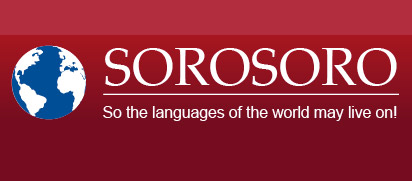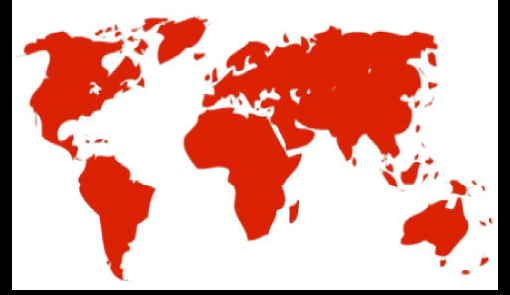Print  |
|


Videos in Xârâcùù – NEW CALEDONIA
A word on the Xârâcùù language…
Xârâcùù is one of the 28 Kanak languages, spoken in New Caledonia. The Austronesian language family to which this group belongs is among the largest language families in the world, with its 1,000 to 1,200 languages shared over a vast area including a large part of Oceania, the Pacific, and South-East Asia.
Xârâcùù is one of the languages spoken in the Xârâcùù area, alongside Xârâgurè, Haméa, and Tîrî. It is the most widely spoken of these four languages, with 5,729 speakers over 14 years old accounted for in the 2009 census. One third of them live essentially around Nouméa, while the other two thirds have remained in their traditional area, on the eastern coast of Grande Terre, and mainly in the Canala and Thio municipalities.
Xârâcùù is also the fourth most widely spoken Kanak language in New Caledonia, following Drehu, Nengone, and Paicî – it is also one of the best maintained: spoken in every municipality of the Xârâcùù language area, it reaches over 90% of the population in Canala.
Like every other Kanak languages, Xârâcùù is part of France’s 75 languages, and recognized in New Caledonia as a language of education and culture since the 1998 Nouméa Accord. It is part of the programs at the Canala and Thio junior high schools, although the language still hasn’t been approved as a relevant option for Baccalauréat, the French secondary school certificate.
In October/November 2010, a Sorosoro team led by linguist Claire Moyse and chief operator José Reynes took off to New Caledonia to film three Kanak languages/cultures, Xârâcùù, Xârâgurè, and Haméa.
Read our description sheet on Kanak languages
Read our desciption sheet on Xârâcùù
Visit the Académie des Langues Kanak website (in French).
The videos in Xârâcùù
Decline and future of the language
Identity issues: interview with Marie-Adèle Jorédié
Here’s a first interview with teacher and activist Marie-Adèle Jorédié, known as the creator of the Bb-lecture program aiming to familiarize Kanak little children to the concept of books. She tells us about her relation towards her own language, what it represents for the Kanak, the necessity to have it handed down, especially using means imported by “the White”, namely the school system and books.
Marie-Adèle Jorédié and the Bb Lecture program in Xârâcùù
In the mid 80s, Marie-Adèle took part in the creation of the language immersion Kanak Popular Schools (EPK). Then in 1999 she put together the Bb Lecture program, an introduction to books geared towards young children before they start attending the White’s school. At the same time, she still teaches Xârâcùù in junior high school in Canala…
Quite a background, which she tells us all about here inside her own classroom, a classroom with stories of elephants and song-based alphabet exercises…
Linguist: Claire Moyse-Faurie (LACITO/CNRS)
Image & sound: José Reynes, assisted by Karl Jorédié
Translation: Annick Kasovimoin (Académie des Langues Kanak – ALK)
Editing: Caroline Laurent
Society issues
Surviving in the mountain, with Marcel Até
Marcel Até recounts life as it used to be, a life of hard work based on the harvest of coffee, citrus fruit, and taro, products that needed to be carried across the mountains on foot. Then came the pesticides, and what’s more, the fire ant, a strongly urticating kind of ant that made harvest by hand impossible. Consequence of such curses, livelihood grew scarce…
Linguist: Claire Moyse-Faurie (LACITO/CNRS)
Image & sound: José Reynes, assisted by Karl Jorédié
Translation: Annick Kasovimoin (Académie des Langues Kanak – ALK)
Editing: Caroline Laurent
Daily Life
Building huts on Xârâcùù territory
The following video is not about the language’s status, transmission, and teaching … but rather about building a hut!
Step by step, Adam Jorédié and “Tonton Blanc” tell a group of youngsters how to build one of those beautiful traditional huts meant as homes to all the important discussion ruling life in the communities: looking for wood (not just any wood), putting up the posts, covering the roof and sides with niaouli bark and straw, adding a spire and its conch shells, and of course the carved door jambs marking off the entry…
Linguist: Claire Moyse-Faurie (LACITO/CNRS)
Image & sound: José Reynes, assisted by Karl Jorédié
Translation: Annick Kasovimoin (Académie des Langues Kanak – ALK)
Editing: Caroline Laurent
Little words for everyday use
Body parts
Linguist: Claire Moyse-Faurie (LACITO/CNRS)
Image & sound: José Reynes, assisted by Karl Jorédié
Translation: Annick Kasovimoin (Académie des Langues Kanak – ALK)
Editing: Caroline Laurent








